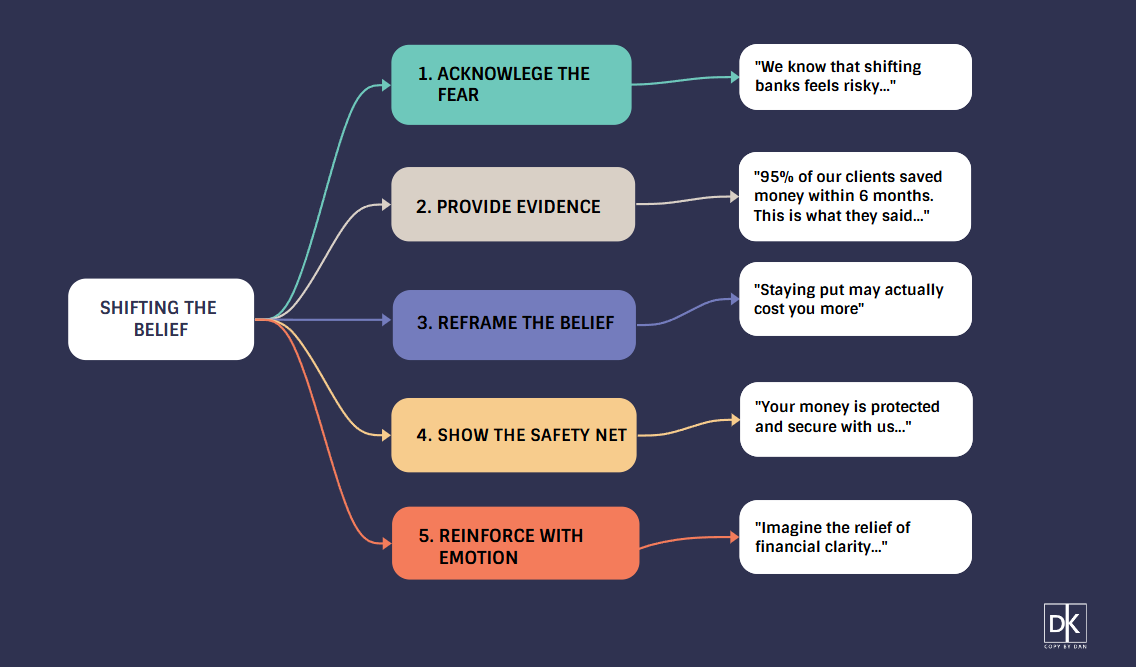
Imagine this…
You’ve just hit publish on a piece you’re proud of.
It’s sharp, clear, informative and even a little witty.
You push it out, sit back and… nothing.
A few likes. A couple of downloads. Zero leads.
What went wrong?
Most advice will tell you the usual suspects are to blame: Your CTAs weren’t strong enough, SEO slipped or maybe your timing was off. And sure, correcting those things can help.
But so often the REAL issue is that most ‘great’ content fails because it doesn’t shift what people already believe.
When people read your content, they don’t come empty-handed. They bring their own baggage like biases, assumptions and of course, their lived experiences.
And then they filter everything through it.
Think for a moment about these:
1. Confirmation bias: People lean towards content that reinforces what they already think. If they think switching providers is a nightmare, they’ll ignore anything that says otherwise, unless you dismantle that belief directly.
2. Numeracy anxiety: In a 2024 KPMG survey, 21% of British adults admitted that their fear of numbers undermines financial decisions. Hit them with tables and ratios and they’ll switch off, no matter how smart the content is.
3. Trust signals: 4 in 5 financial services firms fail to show credibility online through authority, transparency or proof (Business Money). Without trust, even your best work vanishes into the void.
So, even if your content isn’t “bad”, it’s just invisible to a mind that’s already made up.
Financial businesses are particularly prone to this trap. There’s an assumption that if content is precise and intelligent, it will persuade.
But intelligence doesn’t always equal influence.
Think about it:
Until you challenge those beliefs, your content is simply not going to be heard.
1. Start with what they believe.
Name the doubt. Show you get it. “We know switching feels like a headache…”
2. Mirror with stories
Share stories of people who thought the same and then changed their minds.
3. Challenge, then reframe
“Most assume X. But here’s why it may not be true…”. And then offer a better belief.
4. Signal trust everywhere
Facts matter. But values, empathy and transparency are crucial to enable the transformation.

Chime’s “Banking That Has Your Back” campaign tapped into the core belief that ‘banks don’t care about me.’
Instead of shouting about features, they shared human stories. They spoke about people avoiding overdraft stress, sleeping better at night and feeling looked after.
They weren’t just selling banking. They were selling a new belief that ‘maybe a bank can be on my side.’
And the data backs this up. Multiple studies show high levels of confirmation bias exist when making financial decisions. Unless you break through that bias, even the cleverest content won’t convert.
Content isn’t about showing how smart you are.
It’s about helping people see their problem differently.
Shift the belief, and the conversion follows.
Speak soon

I'm Dan. After over 20 years working directly in investment, wealth management and banking, including starting my own regulated business and then transitioning to a copywriter, I've decided to share my knowledge, experience and insight with you.
🧬 Fintech Decoded is a FREE easy-to read, psychology-driven marketing newsletter for people who write, sell or lead in the financial space.
Leave a comment
Your email address will not be published.